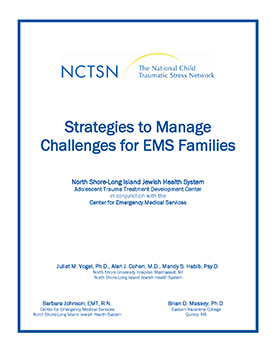
Partner-In Resource
Strategies to Manage Challenges for EMS Families
Type: Fact Sheet
Describes the challenges that Emergency Medical Service Personnel and their families face.
The following resources on child trauma were developed by the NCTSN. To find a specific topic or resource, enter keywords in the search box, or filter by resource type, trauma type, language, or audience.